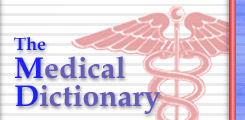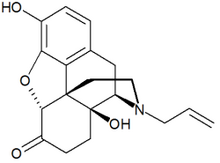Legal File
With the escalation of malpractice suits throughout the United States, Nurse Practitioner wanted to examine recent occurrences of nurse practitioner malpractice. In the November 2002 issue, we surveyed the malpractice terrain and discussed how U.S. courts handle lawsuits, the federal and state processes and how malpractice cases are tracked.
This article attempts to provide nurse practitioner trending data, as well as review different types of cases recently in litigation that will provide insight on mistakes made within the NP community. These cases include data from public reports of judgments. Whenever possible, we attempted to contact the attorney to get a better sense of the issues in the case. This article is not a comprehensive summary of all cases, as research constraints limit the availability of data. However, it does reflect many of the issues surrounding NP malpractice that one may inevitably see during his/her professional career.
Malpractice on the Rise
Although physicians complain of an emerging malpractice crisis, the National Practitioner Data Bank (NPDB) cumulative data indicates a gradual escalation of nurse practitioner malpractice cases over the years1, with steeper percentages of increase in other categories.2 While one may speculate on the jump in nursing malpractice cases between 1997 and 2001, an increase occurred in all other provider class cases reported that year, as well as the number of queries made to the data base.3 Also, it should be noted that 1997 was the year that the NPDB began receiving Medicare and Medicaid exclusion information on practitioners.4 Even so, when the nurse practitioner data are viewed in relationship to the total malpractice cases reported to the NPDB, nursing malpractice reports account for 1.7 percent of all payments reported to the NPDB and nurse practitioners' reports account for 4.7 percent of that total. Thus, the actual nurse practitioner reports are extremely low when compared to all nurse and medical malpractice reports.5
The number of nursing malpractice cases cannot be clearly tracked since many nursing malpractice cases are brought against the institution and not the individual. Also, in many states where nurses are required to have physician supervisors or collaborators, nursing malpractice coverage is provided through joint policies with collaborating physicians, further blurring the lines of fault. The NPDB has attempted to rectify this glitch in the reporting system by compelling institutions to make determinations of the parties most culpable, and then report the incident under his/her name. However, the subjective nature of this rule brings questions as to the accuracy of reporting any advanced practice negligence not directly attributable to the nurse within the NPDB data compilation process.6
We have noticed an increase in the mean and median payments made on nursing malpractice cases. The median and mean payment for all types of nurses in 1998 was $71,418 and $221,905-in 2001 it was $125,000 and $462,251 respectively.7 The data included in the 2000 report indicates that the mean and median payments were $82,700 and $269, 090.(8) Thus, the NPDB nurse data replicates the case reports that reflect a substantial increase in settlements and verdicts in nurse practitioner malpractice cases.9 Now, multimillion dollar verdicts and judgments are seen in nurse practitioner cases.10
Scope of Practice
Interestingly, of the cases selected for review, the most intriguing are those that demonstrate registered nurses clearly practicing outside of their scope of practice, most likely as a nurse practitioner. While it does not seem that the nurses misrepresented themselves, it does seem there was an institutional expectation that the registered nurse take on aspects of the nurse practitioner role.
A Pennsylvania case that occurred in September 2001 reflected this phenomena. Multiple malpractice actions were brought on behalf of a premature infant, whose phrenic nerve was damaged during surgery.11 The child, born after approximately 26 weeks gestation and weighing approximately 1.5 pounds at birth, had patent ductus arteriosis, a condition caused when an arterial duct bypasses the lungs and provides oxygenated blood from the placenta to the fetus during gestation, but fails to close at birth. Following surgery to correct this deficiency, the baby's phrenic nerve was damaged, causing prolonged ventilator support and brain damage.
The child was transferred to another hospital, where it is contended that one of the nurses negligently inserted an arterial line into the baby's ulnar artery when the arterial line should have been inserted into the radial artery. The plaintiff claimed that the nurse was not authorized to perform the procedure, while the hospital maintained that its nurse properly placed the arterial line and was within the authority of license to do so.
In the case against the hospital, where the nurse was found at fault, there was a jury verdict of $10 million. The hospital (nurse) was found 15% negligent, two neonatologists were found 30% negligent and a third neonatologist was found 25% negligent.
Inappropriate Anesthesia
In October 2001, a $3 million settlement was reached in another case because a nurse administered an inappropriate combination of anesthesia, which led to the death of a toddler.12 In this instance, a two-year-old was brought into an emergency department after head trauma from a fall down stairs during a family birthday party. Because the child was required to remain still during a CT scan and did not do so, the nurse administered Versed and Fentanyl, outside of the supervision of a physician or other primary care provider; and without placing the child on a mechanical monitor. In the case, the nurse was not identified as a nurse anesthetist, but contended she followed the emergency department's procedure in the following manner:
She obtained telephone authorization from a staff physician; and
She properly placed the child on a machine monitor, which failed to sound when the child stopped breathing.
Further, the hospital was sued for not having Narcan available to reverse the effects of the sedation, and in failing to have other resuscitative equipment such as a crash cart available, the case was settled prior to trial with the hospital insurance carrier paying $2 million of the settlement and the nurse's liability insurance carrier paying $1 million.
Improper Diagnosis
Finally, a third case that took place in December 2001, involved a nurse at a university health clinic who failed to property diagnose leukemia, resulting in a student's death.13 The student came into the clinic on two separate occasions approximately one month apart with flu-like symptoms, including chills, fatigue, sweating and weakness. She also complained of an inability to void. On both occasions, nurses diagnosed the patient as having the flu, while a doctor later reviewed the patients chart and signed off on it without ordering additional tests.
Approximately 4 days after the last visit, the student collapsed at home and lost consciousness. After being rushed to the hospital, she died several hours later.
The jury found in favor of the plaintiff and against the university clinic and the nurses. This case, which occurred in Massachusetts, rested on the fact that the student health nurses were not NPs, and their use in this capacity was a violation of the standard of care for registered nurses under state law. The institution and the nurses were ordered to pay a $4 million judgment. Interestingly, the jury found in favor of the defendant physicians.
NP Practice
Four recent cases directly addressed nurse practitioner practices and ended with verdicts or settlements against nurse practitioners. In one instance, a patient with a history of mental illness committed suicide using insect poison and an overdose of medication.14 One of the three clinicians working at the clinic on the case was a nurse practitioner. The clinic settled the matter for $1 million.
In another case, both the HMO pediatrician and the HMO NP failed to diagnose glaucoma in a timely fashion.15 Two weeks after the baby's birth, the pediatrician prescribed an antibiotic after noting an eye rash, watering and a slight yellow discharge. Two months later, the HMO NP noted that the infant's eye was turned inward during a routine checkup. Another 2 months later, the nurse practitioner prescribed an antibiotic for excessive tearing and light sensitivity. Finally, ofter being diagnosed with glaucoma, the infant underwent several surgeries, but still has impaired vision. A jury awarded an $8 million judgment, finding the HMO ophthalmologist 90% liable and the NP 10% liable.
In an anonymously reported Massachusetts case, a patient sued four defendants-two primary care physicians, a dermatopathologist and a nurse practitioner-for failure to diagnose malignant melanoma. After she had already been to the two primary care physicians and the dermatopathologist, the patient saw the NP and said that her mole had been biopsied 2 years earlier and that it was normal. The patient requested the mole be removed, but the NP told her that before she could be sent to anyone for removal, the NP would have to get the biopsy report and medical records from the original primary care physician. The NP noted in her records that the mole was a typical dysplastic and suggested that the plaintiff wear sunscreen, but did not tell the plaintiff that the mole could be cancerous or precancerous. The case was setfled at mediation for $675,000.
In another anonymous Massachusetts case, a $6.4 million settlement was reached when a nurse practitioner in an obstetrics practice failed to diagnose and treat a maternal infection. After calling complaining about an elevated temperature, a patient came in and was seen by a nurse practitioner who diagnosed an infection and took a urine specimen. The decedent was given a prescription for an antibiotic, but was allegedly advised not to fill the prescription until the results of the urine culture were received. The patient called the next day and spoke with an unsupervised student NP, who also told the patient not to fill the prescription. The office NP was advised of the call and the information was recorded in the patient's medical record, but no follow-up call was made and the patient's symptoms were not reported to the obstetrician.
The next day, the patient spoke with the obstetrician and was told to report to the hospital. The night she was admitted, she had viral symptoms and a possible urinary tract infection. Shortly after midnight, intrauterine fetal death was noted. The baby died from septicemia. Subsequently, an epidural anesthetic and artificial rupture of the membranes were performed. Once the deceased baby was delivered, the patient went into cardiac arrest, she was resuscitated and transferred to the ICU where she suffered multiple organ failure and died without regaining consciousness. Upon mediation, the parties agreed to a settlement of $6.4 million.
In conclusion, these cases are interesting and continue to reflect the findings of the NPDB. The reasons for NP malpractice, as reported by the NPDB, continue to be diagnosis-related, treatment-related and medication-related. These cases reflect the trends and issues in current nurse practitioner malpractice litigation.
FOOTNOTES
1. The National Practitioner Data Bank (NPDB), established under the Health Quality Improvement Act, collects malpractice and disciplinary data on doctors, dentists and other health care providers, including nurses. Previously published NPDB data was collected and published during the year it was reported. Recently, the HHS conducted additional analysis and published new figures, which are based on reporting malpractice in the year in which it occurred.
2. The NPDB keeps data on registered nurses, nurse practitioners, nurse midwives, nurse anesthetists and licensed practical nurses.
3. National Practitioner Data bank 2000 Annual Report, Pg. 33, Fig. 2 Growth in Queries by Querier Ty,pe 1990-2000.
4. Ibid., pg 39. See also 45 CFR Part 61, Health Care Fraud and Abuse Data Collection Program: Reporting of Final Adverse Actions. This final rulemaking mandates the reporting of civil judgments against a health care provider, supplier or practitioner in federal or state court; actions by federal or state agencies responsible for the licensing and certification of health care providers, suppliers or practitioners; exclusion of a health care provider, supplier or practitioner from participation in federal or state health care programs; and any other adjudication actions or decisions that the Secretary (HHS) establishes by regulation. The Health Insurance Portability and Accountability Act of 1996 (HIPAA) combined with this rule, were the basis for the establishment of a complementary national database, the Health Integrity and Protection Data Bank (HIPDB), also administered through the Department of Health and Human Services.
5. Ibid., pg. 25.
6. 38 CFR Part 46 (4.23.02). This final rule amends regulations regarding reporting of health care practitioners to the NPDB by amending the provisions regarding malpractice payment, reporting to delegate underlying decision-making to malpractice review panels and to delegate actual reporting authority to facility directors and the Chief Patient Care Services Officer. The NPDB allows institutions to determine and assess fault of practitioners and report accordingly.
7. National Practitioner Data Bank 1998 Annual Report, Table 18.
8. National Practitioner Data Bank 2001 Annual Report (per Robert Oshel, Director of Policy Research), NCQA, HHS.
9. The figures reflect a cumulative mean and median based on data from the beginning of the NPDB. NPDB keeps base mean and median data, which is used here; and they also adjust mean and median data based on inflation. This data was not used in this article.
10. One case indicates a $6,400,000 recovery verdict against a nurse practitioner in an obstetrical practice. In another case, an $8,000,000 verdict was obtained where a nurse practitioner did not timely diagnose glaucoma in an infant. The nurse practitioner was found 10% responsible.
11. Stern vs. St. Luke's Hospital, St. Christopher's Hospital, et. al.
12. Fernandez vs. Rush Presbyterian-St. Luke's Medical Center, et. al., case no. 97L2443.
13. Goldberg vs. Northeastern University, et. al, Case No. CV-96-01032 (December 2001).
14. Frazier vs. Austin Regional Clinic.
15. Schwab vs. Kamat.
Winifred Carson-Smith, Esq. and Cathy Klein, Esq.
Copyright Springhouse Corporation Mar 2003
Provided by ProQuest Information and Learning Company. All rights Reserved



